Culinary adventures on the Eyre Peninsula

“Legend says there’s buried treasure on this island,” Tobin Woolford tells us as we pull up to the soft sands of Flinders Island on the Eyre Peninsula.
The sound of oceanic shorebirds adds a delightful touch to the otherwise overcast day and intimidating grey clouds that followed us on the 1.5-hour, 35km journey from Elliston.
An osprey circles above. As the symbol for courage, it seems a fitting sight for this moment as my white knuckles regain colour once I arrive on land.
I pat myself on the back for stepping out of my comfort zone and onto the high seas. I stand on the porch of Flinders Island Eco Escape watching the sun cast golden rays across the rocky outcrops that frame Groper Bay. I reflect on Tobin’s tale of fantastical golden secrets.
Over the next few days exploring a small part of the Eyre Peninsula’s wild coast, I learn that there’s more to treasure than just X marks the spot.
A private island
We’re on Flinders Island for a little over 24 hours, but within moments of arriving, it’s clear this spirited piece of land holds many secrets. From sealers and whalers to pastoral leaseholds, today, the island is owned by the Woolford family, who have run a sheep farm on the island for more than 40 years.
Now, for the first time since the livestock arrived in 1845, the Woolfords plan to temporarily transport the few hundred remaining sheep back to the mainland while they convert Flinders Island into a Safe Haven in conjunction with Australian State and Federal Governments. This requires the family to remove all pests to create a safe home for nationally threatened mammals.
“We wanted to remove pests on the island for many reasons, but mostly to protect and enhance the island’s unique ecosystem,” Tobin says.
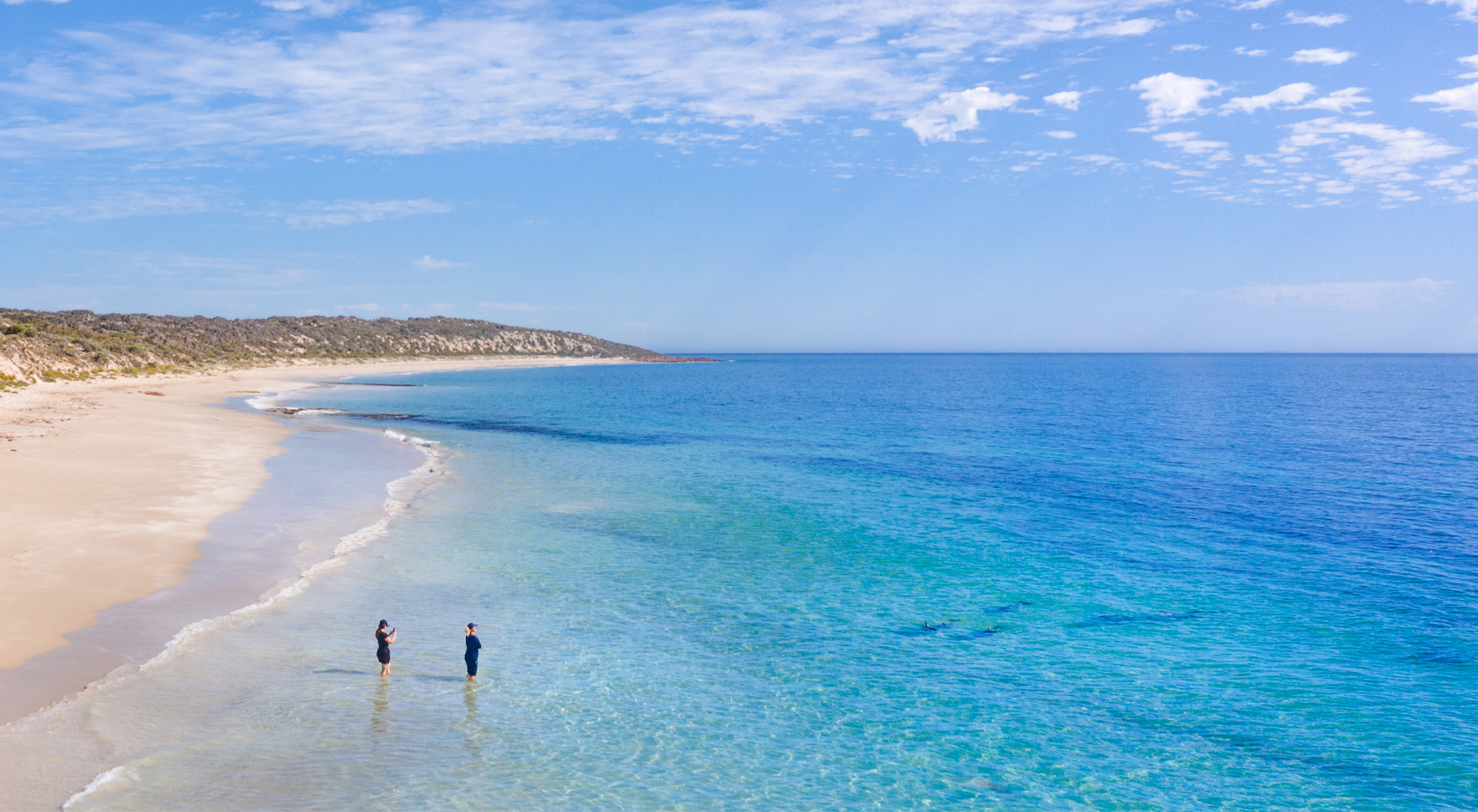
It was Flinders Island that inspired the now growing family business – Eyrewoolf Abalone. When Tobin’s father Peter bought the lease to the island in 1979 – eventually turning it into a freehold in the 1980s and living on the remote land for six years – he met with a local diver who showed the many treasures that nature provides under the sea’s surface. The abundance of abalone in the area is the most intriguing.
Now Tobin, along with his brother Jonas, spend seven months of the year diving for abalone.
“We can spend up to six or seven hours a day under water during harvest season,” Tobin tells me over an abalone cooking demonstration and a dinner of fresh seafood and homemade tom yum Soup.
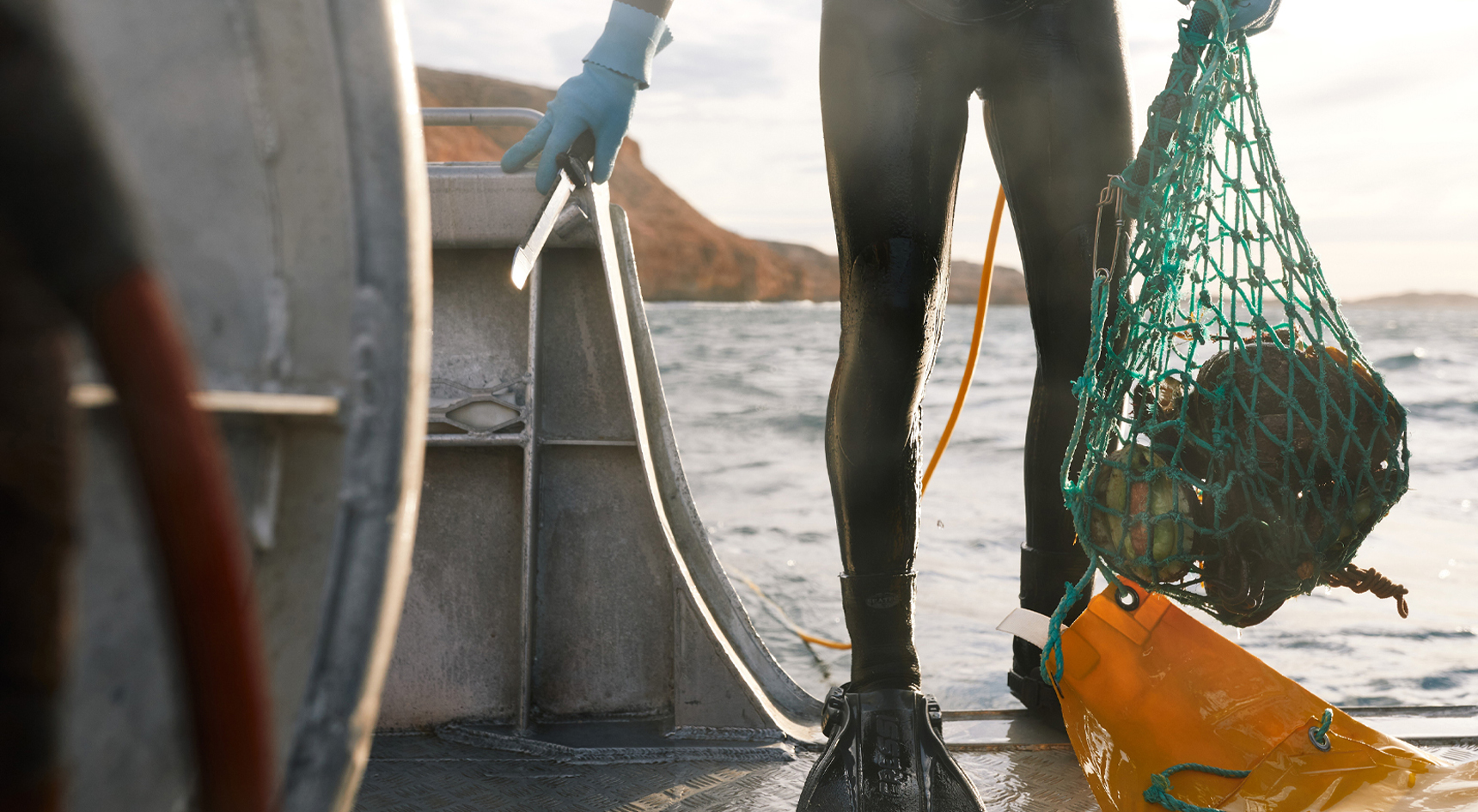
As dawn rises, the Toyota Landcruiser chugs its way along the off-road tracks that dart to all corners of the island. It’s mostly natural bushland and coastal scenes.
We explore shipwreck sites, historic shearing sheds, calm, pristine beaches on the dry and protected north shore, and the wild and wet reaches of the south.
At each stop, I’m mesmerised by the magnificent blues that crash against marshmallow soft sands or rainbow rocky cliffs. “In different weather conditions, there are different things to do,” Tobin says.
On the southern end, you’ve got rugged coastlines and granite rock pools, but if there’s a swell or onshore winds, you can go to the white sandy beaches of the north.
“I could get used to life out here,” I tell him. “I wouldn’t mind waking to these views every day.”
A combination of nostalgia and love for the island has me wishing for more time here. Flinders Island may house buried treasure, but as far as I’m concerned, it is one.
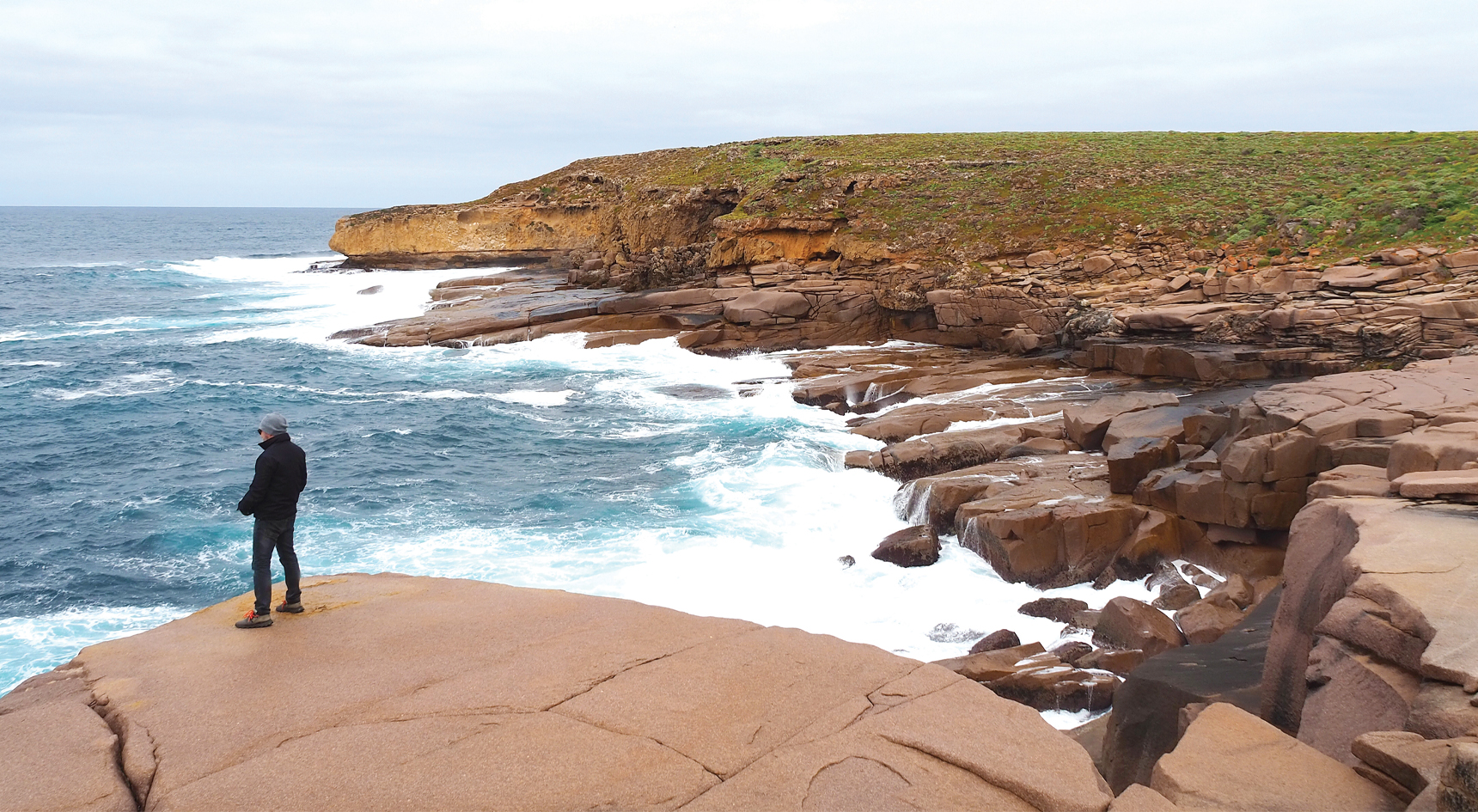
Oyster ahoy
Eyre Peninsula is the home of South Australian seafood, and Port Lincoln is the capital. When we arrive in the foyer of the iconic Port Lincoln Hotel, it instantly feels like home.
I’ve heard a lot about the seafood platter at Sarin’s Restaurant, and after a few days learning about local seafood on Flinders Island, my tastebuds dance for the opportunity to dig into the silver plate of underwater delights.
To the right of the restaurant, major renovations are underway, and we’re told that a new outdoor dining area will open in time for summer. I take a sneak peek, and the promising location ensures a planned trip to visit again. Cocktails with ocean views? Don’t mind if I do.
The dinner at Sarin’s Restaurant delivers on reviewed promises. My belly is full to the brim, but in this moment, if I could make a wish upon a genie lamp, it would be for another serving of the mornay scallops.
As I settle into the cloud-like bed at Port Lincoln Hotel, overlooking the spectacular views of Boston Bay and twinkling lights of Port Lincoln, I wonder what other gems are awaiting us over the next couple of days.
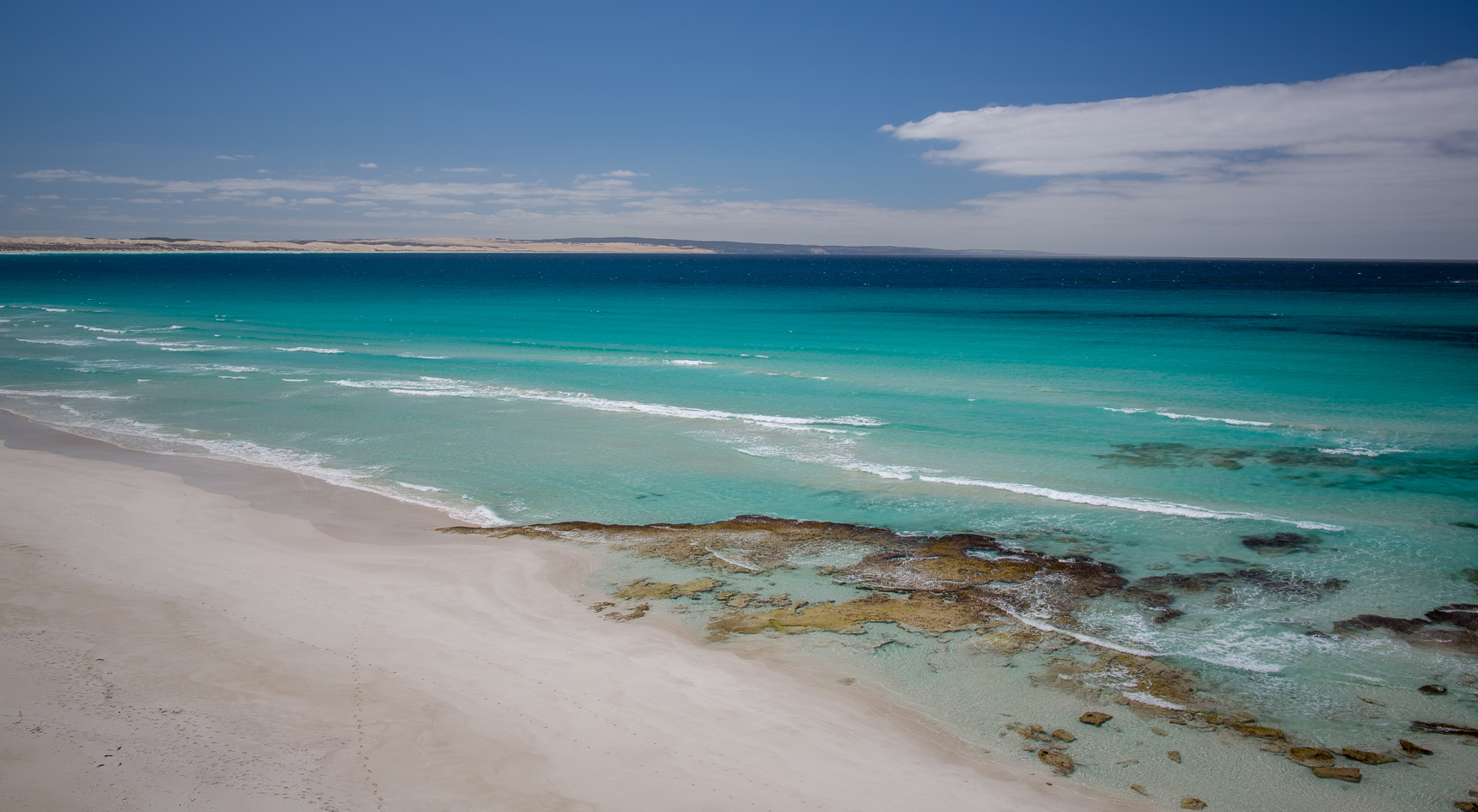
There are 184 hectares of oyster farms in Coffin Bay, and I’m keen to explore this part of the region.
We journey 47km west of Port Lincoln to head back out to sea with Experience Coffin Bay for its farm and bay tour. On the way, we hit traffic, trailing a couple of emus walking on the road, leading us to the Coffin Bay Yacht Club Floating Marina.
Megsy, our host, and oyster farmer Scotty welcome us aboard their new oyster boat and lead us to our table. After a quick introduction, we travel along the pristine coast from Coffin Bay township to an oyster farm. We then cruise through the waterways to visit the seals on ‘The Brothers’ islands, where we learn about this remarkable stretch of ocean.
Lines of worn timber rails stretch along the crystal-clear ocean. Cages full of oysters in varying sizes hang from the running lines, reminding me of peg buckets hanging on a clothesline.
The boat gently pulls up between two lines, and I can see straight down to the seabed. The water dazzles in the sun and I’m amazed at the shallow depth given our proximity to the land.
Dressed in rubber waders, I step into the cool water. The fabric tightens around my legs, and I feel like I’m being vacuum packed and dipped in ice water. I’m distracted by the clarity of the salty liquid and the beauty of the farm.
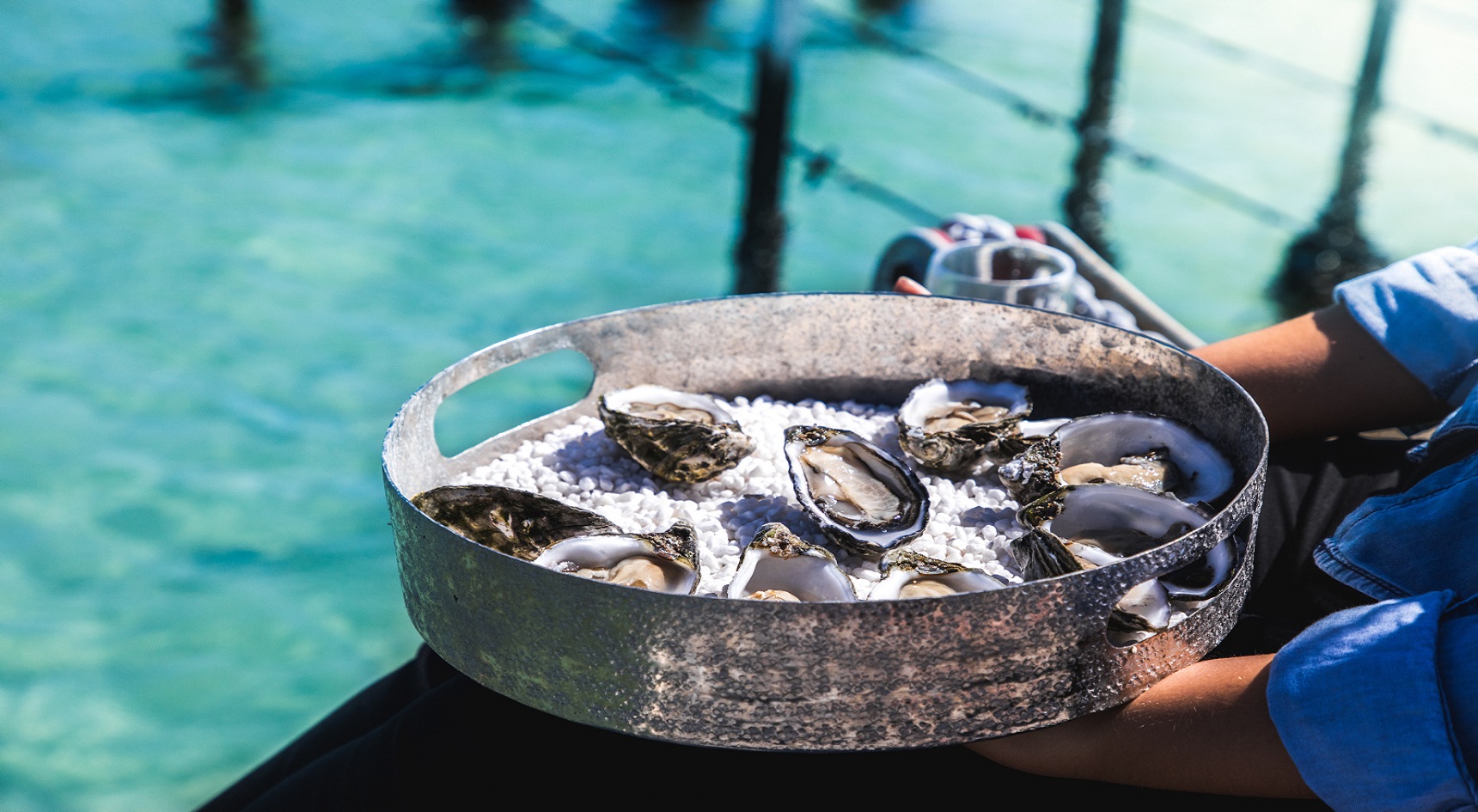
“We farm differently to those in the eastern states,” Scotty tells us when we’re back on the boat, dining on a dozen freshly farmed and shucked oysters. “Our water is too salty for the baby oysters to survive, so we need a hatchery.”
He explains the grading progression, and how each oyster transitions out of the water, spending 24 hours in dry conditions as a form of training.
There’s a lot of magic when it comes to Coffin Bay oyster farming.
Scotty explains that oysters are ocean filters and take on the flavour of the water column they’re in. With no pollution or chemical run-off in Coffin Bay, the oysters remain flavoursome and pure.
I slide an oyster into my mouth, tasting the saltiness of the ocean. I try another with tabasco sauce. This is a type of magic I could get used to. With my sea legs reaching their limit, it’s time to explore the surrounding bushland.
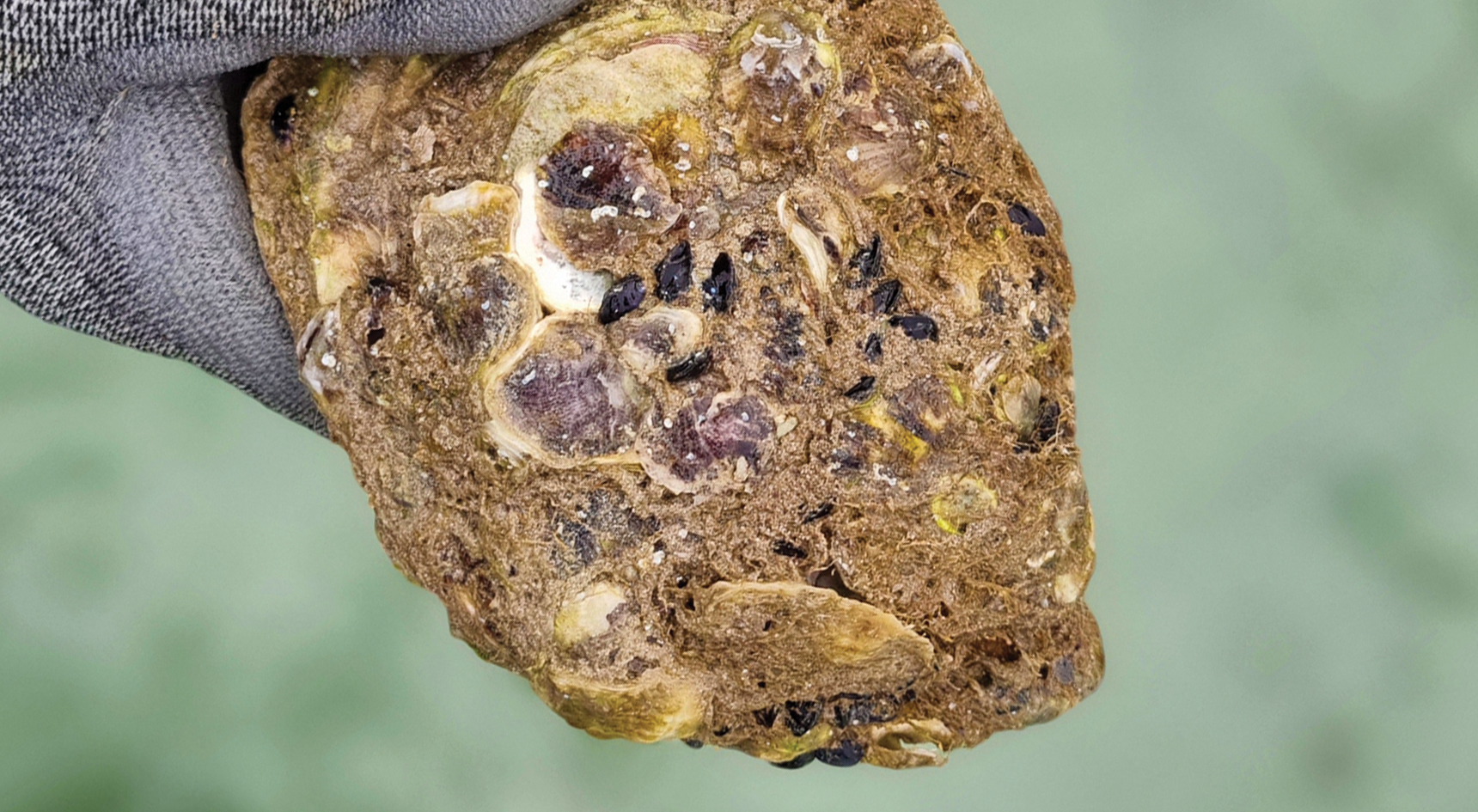
When Kane and Brooke Slater heard about an application to develop bushland, they had to do something to protect it.
The destination, titled Yarnbala, includes 28 hectares of grassy low she-oak woodlands, which is classified as a critically endangered ecological community in South Australia.
“This is the only surviving, untouched landscape of its type on the [Eyre] Peninsula,” Kane says. He leads us down a winding path to some tiny house-like structures sitting among the bush.
I noticed a few tiny creatures moving through the trees at night. When we realised they were western pygmy possums, which are currently listed as a vulnerable species, we wanted to create a safe haven for them.
Like the opening of a treasure chest, Kane slowly lifts the lid on one of the houses. We strike gold. Inside, a possum no bigger than the palm of my hand, hides in a corner nurturing her two tiny babies.
“That’s so rare,” Kane tells us. “You almost never see that.”
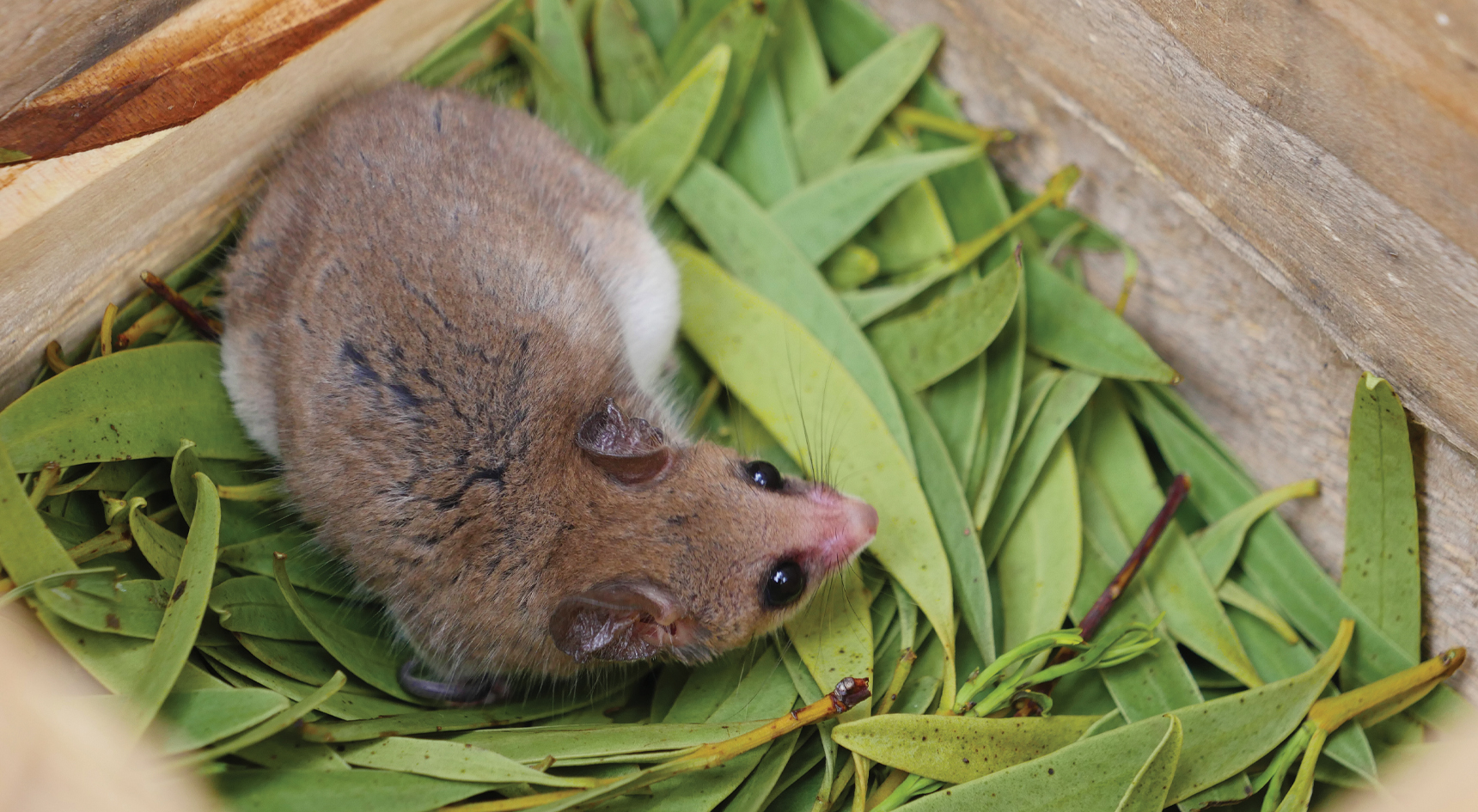
To celebrate the rare find, it’s time to clink glasses at one of the Eyre Peninsula’s most famed wineries. We sip through our one-hour tasting experience as the sun sets over Peter Teakle Wines, turning the sky a magnificent kaleidoscope of red, pink and orange.
Rays shine a golden beam over the vast vineyards, and from our table it looks as if pixie dust is settling on the once vibrant green vines.
Plate-by-plate, we’re served a menu of delicious, locally inspired meals. Herbs and veggies are sourced from the extensive garden out the back, while locally caught seafood and meats are the hero on the platters.
Kingfish sashimi topped with salty coastal succulents, glazed pork belly accompanied with native spinach, miso-soaked scotch fillet, and roasted cauliflower with soy caramel all make an appearance on the chef’s selection tasting menu.
But it’s the fried Spencer Gulf king prawns, flavoured with squid ink, wasabi mayo and katsuobushi, that really win the gold for me at the end of the night.
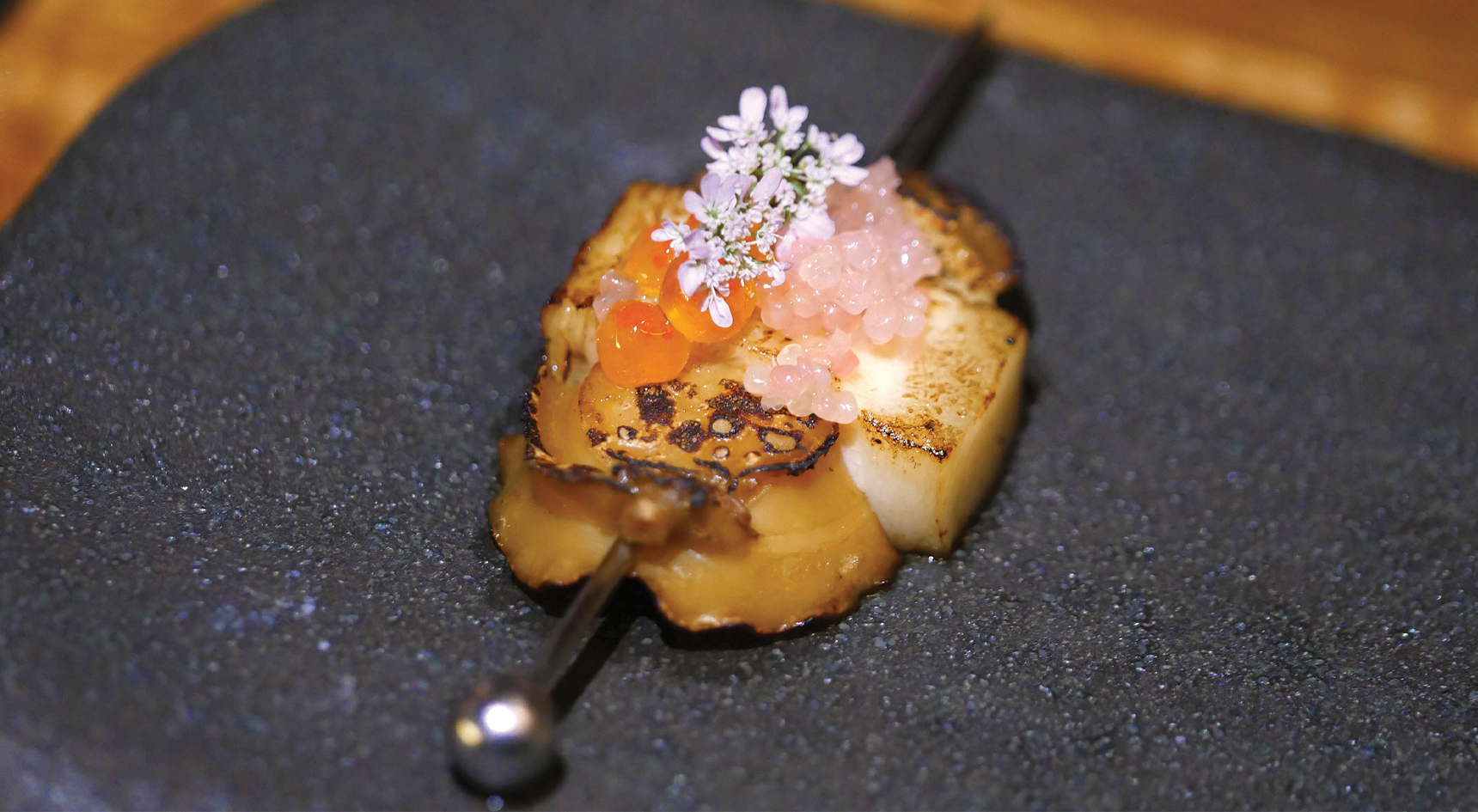
Good as gold
Damien from Untamed Escapes meets us at the front of the Port Lincoln Hotel for a custom tour around Port Lincoln and Lincoln National Park. It’s our last day before heading back to Adelaide. Naturally, we’ve hired the experts to help us cover as much ground as we can in just a few hours.
Our first find satisfies our morning search for liquid gold, followed by more seafood delights for lunch. Sue, the owner of Boston Bean Coffee Co, starts us with a tasting.
“An espresso will heighten your tastebuds – it gives you the salt, sweet and sour flavour of coffee,” she says as we sip away at the first of three coffees for the morning. It’s the best precursor to lunch.
Walking through the factory of The Fresh Fish Place, we watch as a small team of staff scale and fillet a new catch of squid, kingfish and whiting. These will make their way out to the shop front where seafood is sold fresh or used in the cafe.
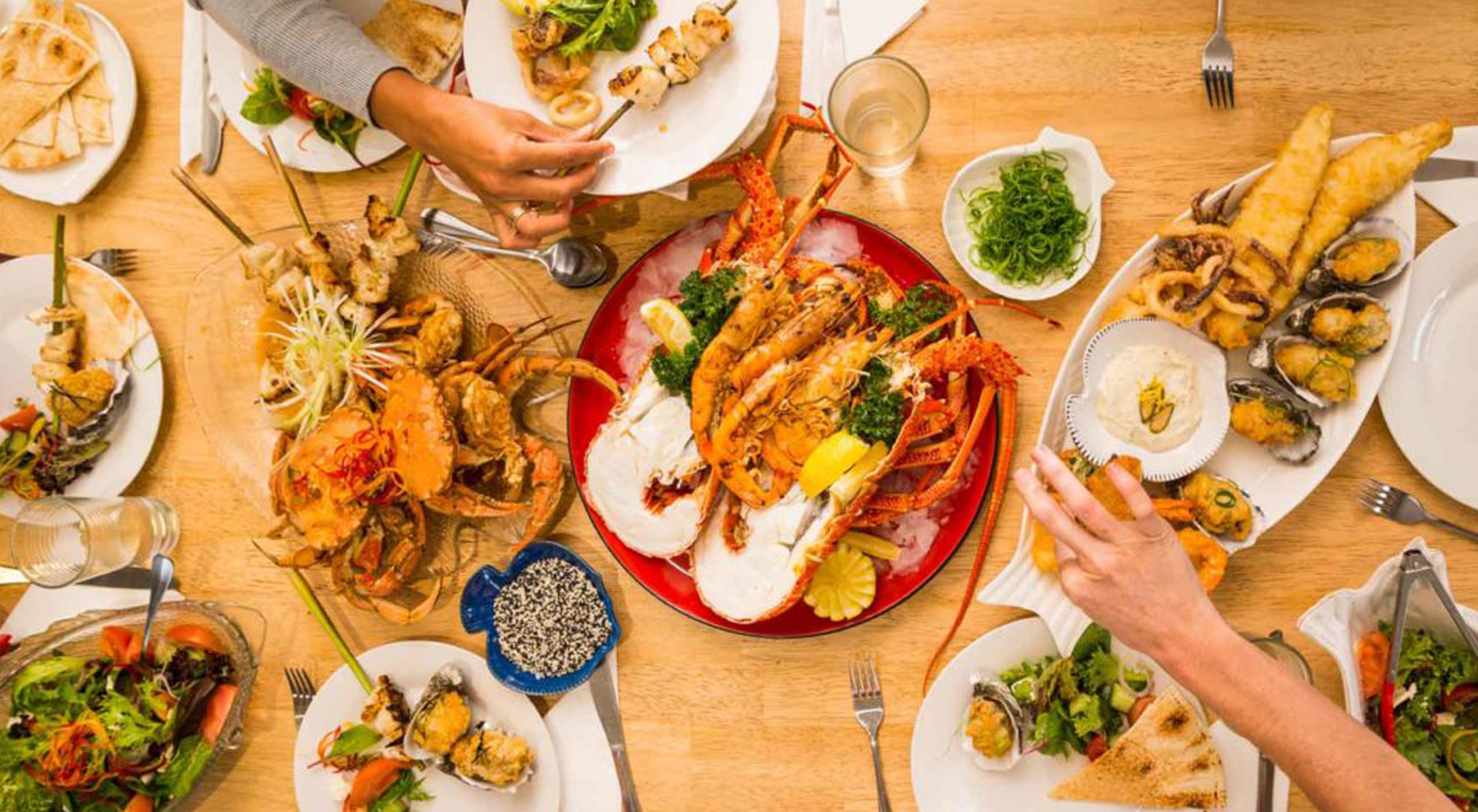
It may be early, but it’s our last day in Port Lincoln and we can’t go past some fish and chips from this popular eatery before setting off on our final adventure.
Driving through the privately owned Mikkira Station, the city feels worlds away. Curious emus dart about the native scrubland, kangaroos hop away in the distance, and the birdlife adds a backing track to the otherwise tranquil landscapes.
But it’s the koalas that draw a crowd. The sanctuary is home to a colony of koalas lazing about in eucalyptus trees and is open to the public (via permit).
Heading back toward the coast, Damien tells us that whaling was South Australia’s first industry, and Fishery Bay, and Whalers Way – 2600 acres of private land accessible to the public – preserves some of this history.
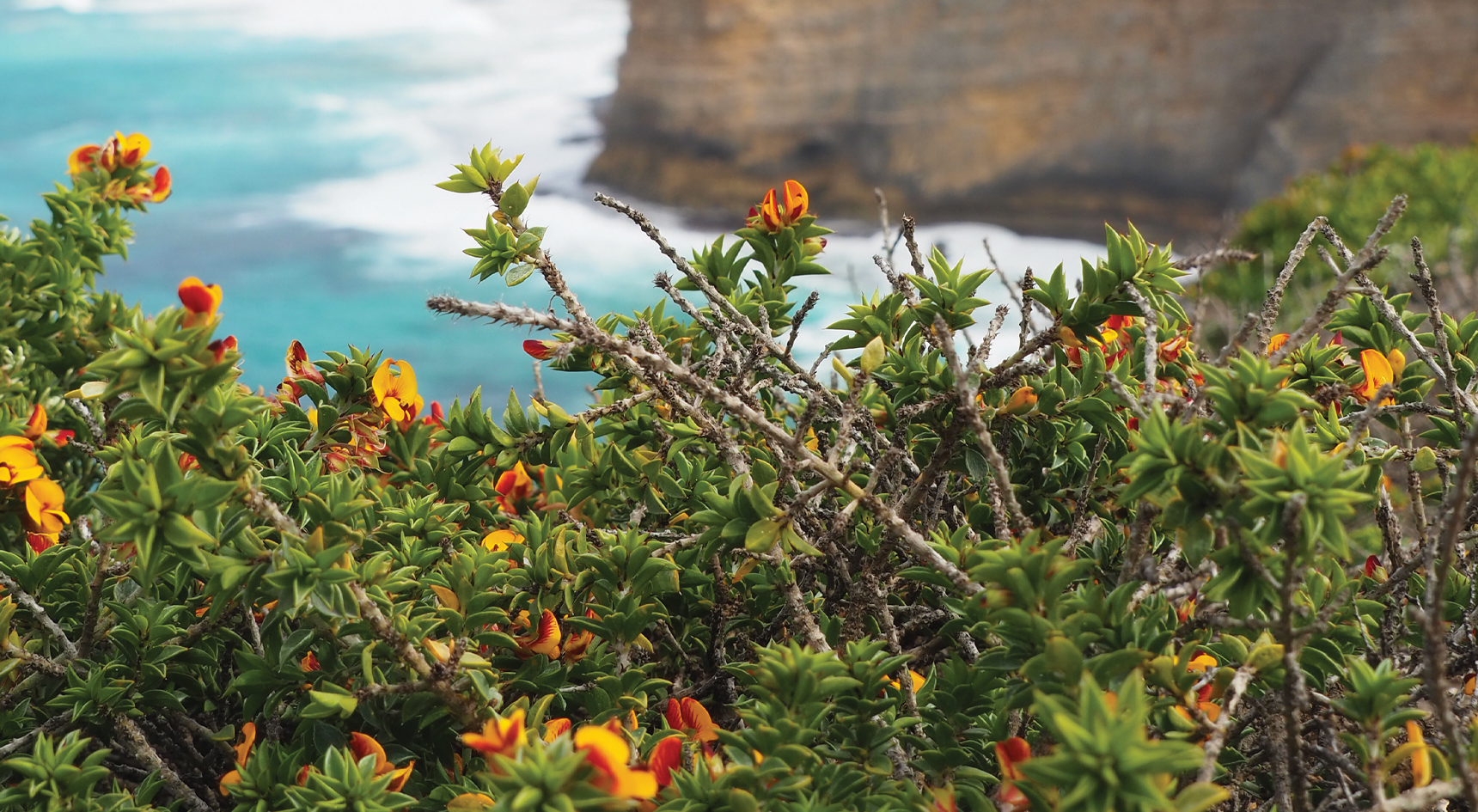
The deep blue waters cascade onto the sandy shore. It’s an inviting setting and had the summer sun graced us, our adventure would have quickly turned into a day at the beach.
“This is one of my favourite spots,” Damien says. He paints the scene of the location’s gory whaling history. Whalers would harpoon the mammals from one end of the bay and drag them across to the the other side for processing.
Southern right whales were called that because they are the right whales to hunt. They’d come in really close to the shore, which made them easy to hunt.
Noticing the forlorn look on my face at the thought of this period of SA’s history, he quickly quips another fact.
“We have Thomas Edison to thank for whales, because electricity helped us move away from whale oil.”
To think, had history taken a different path, the whale species could have been forever lost. It’s a fitting end to the three-day adventure on the Eyre Peninsula.
As we make the drive to Port Lincoln Airport, a rainbow appears through the still looming grey clouds, landing somewhere on the seas of this western region.
It seems if we look hard enough, this natural wonderland provides plenty of treasures above and below the sea.

